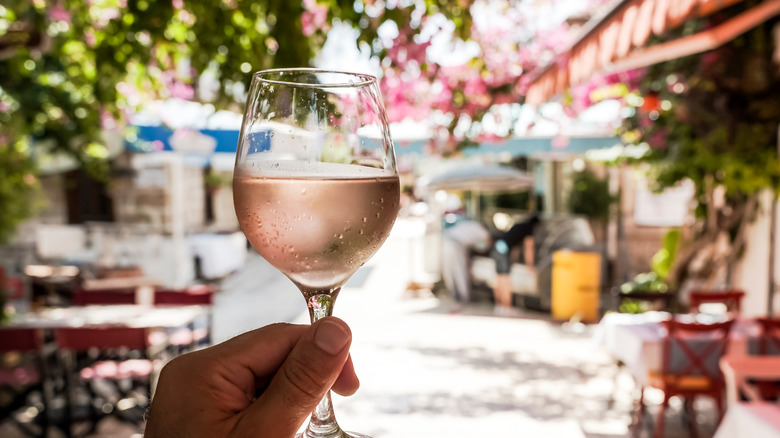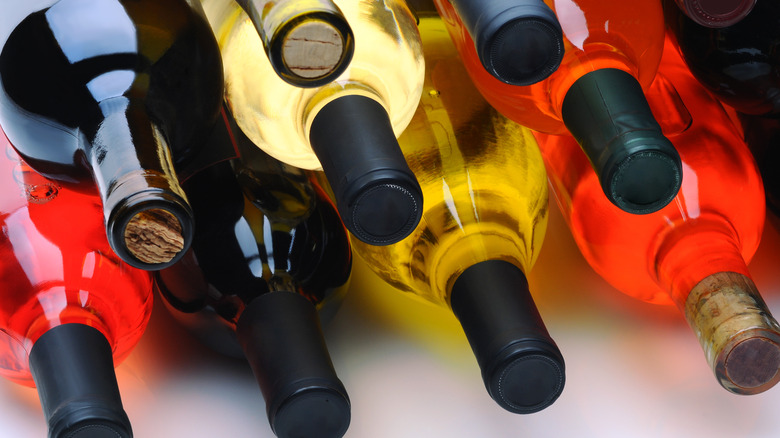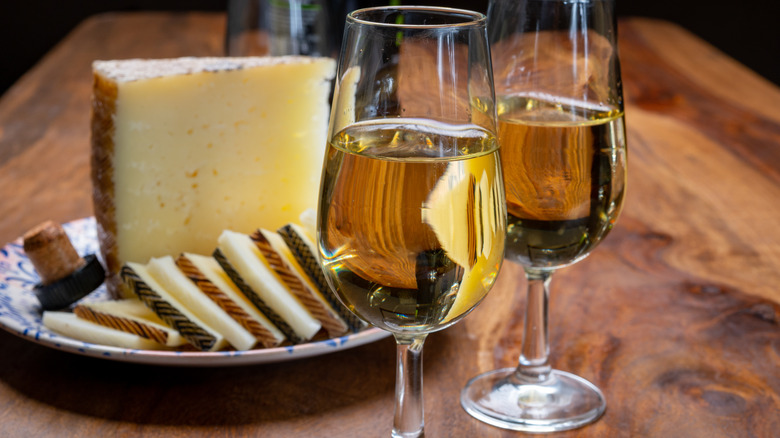The Physics Trick That Makes Wine Chill 50% Faster
Enjoying a glass of wine at the proper temperature isn't just for wine snobs. But if you don't have a fancy wine fridge or cellar in your home, you might be left trying to remember to chill that bottle of Pinot Grigio right before your friends come over for dinner. And there's no worse feeling than looking at the clock and realizing you've only got 10 minutes to get that bottle chilled. If only you could make time go faster...
Well, you kind of can. Not for all things, but there are things you can do to make a bottle of wine chill in approximately half the time. (We aren't sure why there hasn't been more time and money dedicated to the science behind a crisp, cold glass of rosé, but here we are.)
Perhaps you've heard of wrapping the bottle in a wet towel to speed up cooling? While this is well-intentioned, it doesn't work because it actually insulates the bottle, per Genuine Ideas, which can make the cooling process take even longer. So, what are you to do when you need a cold bottle, stat?
How to chill your wine faster
The cold towel wrap is out, but there has been a science experiment done to determine the best orientation for cooling wine, per Bon Appétit. Laying the bottle down horizontally can cut the chill time down by 50%, which is a pretty big deal. (It's just as well, considering most people probably only have room to store their wine bottles horizontally in their fridge or freezer anyway.)
Still, truth be told, you may have to wait a bit longer than you'd like without access to a commercial-grade blast cooler. (It's also important to note that this experiment was done in a tightly controlled, lab-like environment, so take the findings with a grain of salt.) Even in ideal circumstances, the difference only ends up being about 10 minutes.
So, how does it work? Think of it like a convection oven, except for a cooler. We know hot air rises and cold air sinks, and the same is true for liquids, per Boston University. That tiny bit of air at the top of the wine bottle, between the cork and the liquid, will shift to near the middle of the bottle when it's lying horizontally. This allows for a greater surface area for that convection of hot and cold to take place, therefore cycling the cold through the liquid faster. The result is a bottle of wine that gets colder a bit faster than an upright bottle.
Why chill your wine?
Depending on the type of wine (red, white, or pink) you'll likely want to consume them at slightly different temperatures. You wouldn't prepare a perfect evening of wine and cheese pairings and serve a warm glass of white wine, would you? Certified sommelier Chevonne Ball says the temperature of the wine is crucial in how it tastes, as wine that's too cold or too warm can bring out extra acidity or mask some of the delicate flavors of the bottle, per Martha Stewart.
Whether your thing is organic, sustainable, or Old World wines, you'll want to enjoy them the best you can — and that means at the proper temperature. Whether it's one $200 bottle or 20 $10 bottles, it pays to take the extra step of chilling your wine properly.
It's best to avoid the cardinal sin of adding ice cubes to wine, so pop that bottle in the fridge or freezer on its side as soon as you know you're going to enjoy a glass or two that night. Nothing can make up for giving the bottle the time it needs to reach the desired temperature, but flipping it on its side can make a dent in the process.


